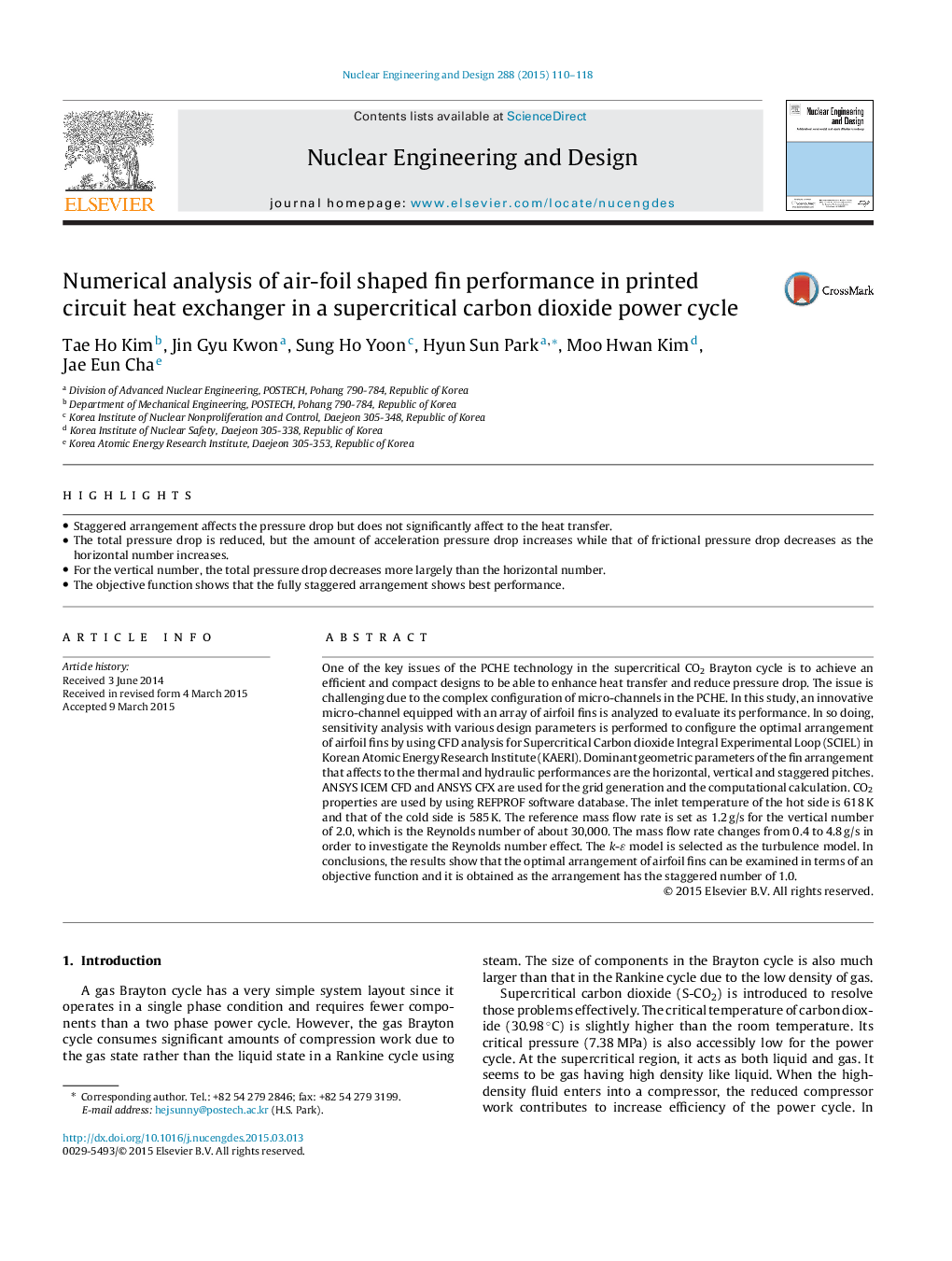| Article ID | Journal | Published Year | Pages | File Type |
|---|---|---|---|---|
| 6761136 | Nuclear Engineering and Design | 2015 | 9 Pages |
Abstract
One of the key issues of the PCHE technology in the supercritical CO2 Brayton cycle is to achieve an efficient and compact designs to be able to enhance heat transfer and reduce pressure drop. The issue is challenging due to the complex configuration of micro-channels in the PCHE. In this study, an innovative micro-channel equipped with an array of airfoil fins is analyzed to evaluate its performance. In so doing, sensitivity analysis with various design parameters is performed to configure the optimal arrangement of airfoil fins by using CFD analysis for Supercritical Carbon dioxide Integral Experimental Loop (SCIEL) in Korean Atomic Energy Research Institute (KAERI). Dominant geometric parameters of the fin arrangement that affects to the thermal and hydraulic performances are the horizontal, vertical and staggered pitches. ANSYS ICEM CFD and ANSYS CFX are used for the grid generation and the computational calculation. CO2 properties are used by using REFPROF software database. The inlet temperature of the hot side is 618Â K and that of the cold side is 585Â K. The reference mass flow rate is set as 1.2Â g/s for the vertical number of 2.0, which is the Reynolds number of about 30,000. The mass flow rate changes from 0.4 to 4.8Â g/s in order to investigate the Reynolds number effect. The k-É model is selected as the turbulence model. In conclusions, the results show that the optimal arrangement of airfoil fins can be examined in terms of an objective function and it is obtained as the arrangement has the staggered number of 1.0.
Related Topics
Physical Sciences and Engineering
Energy
Energy Engineering and Power Technology
Authors
Tae Ho Kim, Jin Gyu Kwon, Sung Ho Yoon, Hyun Sun Park, Moo Hwan Kim, Jae Eun Cha,
